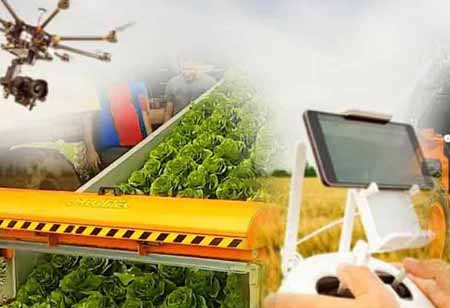Thank you for Subscribing to Agri Business Review Weekly Brief
Integrating Biostimulants into Farming Practices
Powering the sustenance of billions globally, the Asia-Pacific (APAC) region stands as a formidable force in global agricultural production.

By
Agri Business Review | Wednesday, January 17, 2024
Stay ahead of the industry with exclusive feature stories on the top companies, expert insights and the latest news delivered straight to your inbox. Subscribe today.
By understanding their benefits, choosing the right products, and integrating them effectively, APAC farmers can reap the rewards of this innovative technology and contribute to a more resilient and sustainable food system for the region.
FREMONT, CA: Powering the sustenance of billions globally, the Asia-Pacific (APAC) region stands as a formidable force in global agricultural production. Nevertheless, farmers in APAC grapple with a myriad of challenges, stemming from escalating demand and limited resources, such as pest pressure, soil degradation, and the impacts of climate change. To address these pressing issues and ensure enduring food security, an increasing number of individuals are integrating biostimulants into their arsenal, recognizing them as an efficacious tool in the battle against these agricultural impediments.
The integration of biostimulants into APAC farming practices offers a myriad of benefits that contribute to sustainable and profitable agriculture. Foremost among these advantages is the reduced dependence on chemical fertilizers and pesticides, as biostimulants provide a more environmentally friendly alternative for crop production. Additionally, the promotion of root growth and microbial activity by biostimulants enhances soil health, fostering the development of fertile soils essential for long-term agricultural productivity. In the face of increasingly unpredictable climate patterns in the region, biostimulants prove invaluable by improving stress tolerance in crops, thereby enhancing the overall resilience of farming systems. Ultimately, the incorporation of biostimulants translates into increased profitability for farmers through improved yields and enhanced produce quality, making it a strategic and sustainable choice for modern agricultural practices.
Integrating Biostimulants into Farm
Initiate with cautious experimentation: Biostimulants exhibit variability in efficacy based on factors such as soil type, crop species, and environmental conditions. Undertake small-scale trials on diverse crops and biostimulant varieties to ascertain optimal outcomes for your farm.
Seek Professional Guidance: Engage with agricultural extension officers, agronomists, or qualified experts to glean valuable insights into the most suitable biostimulants tailored to the specific needs and local context.
Prioritize Quality: Choose biostimulants from reputable brands, ensuring they provide transparent information regarding ingredients and efficacy.
Integrate with Sound Agronomic Practices: The role of biostimulants is to complement, not replace, treatment. Combine their use with established agricultural practices such as crop rotation, proper irrigation, and integrated pest management for enhanced results.
Latest Developments
Emergence of Seaweed-Based Biostimulants: The utilization of seaweed extracts is on the rise in the Asia-Pacific region, driven by their substantial mineral, vitamin, and bioactive compound content that enhances plant growth and stress resilience.
Emphasis on Microbial Biostimulants: Ongoing research is increasingly delving into the prospects of beneficial microbes as biostimulants, aiming to enhance soil health and fortify plant immunity.
Advancements in Delivery Systems: Scientists are actively engaged in the creation of innovative delivery methods for biostimulants, with a focus on optimizing their impact by ensuring efficient targeting of plant tissues.
Biostimulants hold significant promise for enhancing agricultural resilience, sustainability, and productivity within the APAC farming systems. By judiciously selecting and deploying these natural plant enhancers, farmers safeguard their livelihoods and also play a pivotal role in fostering a more stable and sustainable food chain for the entire region.





